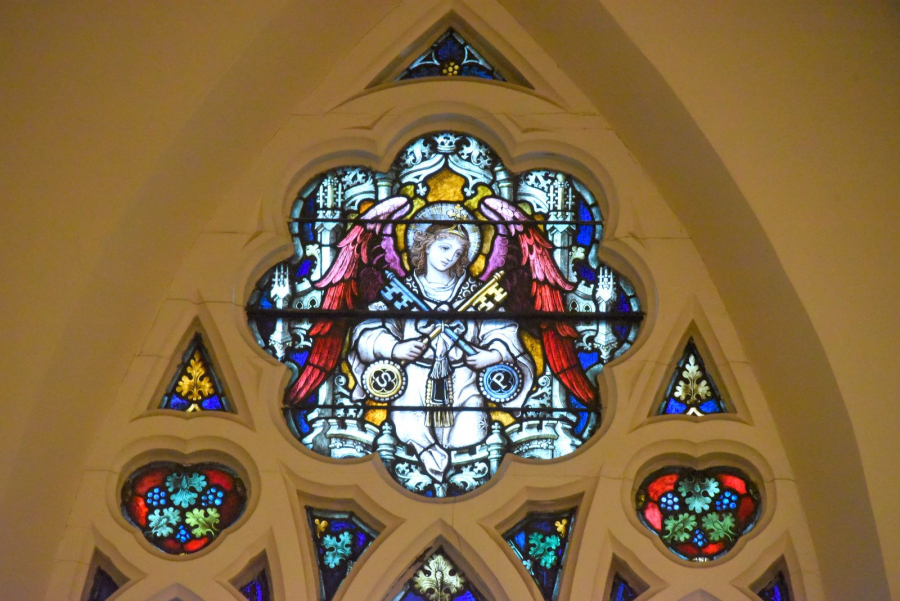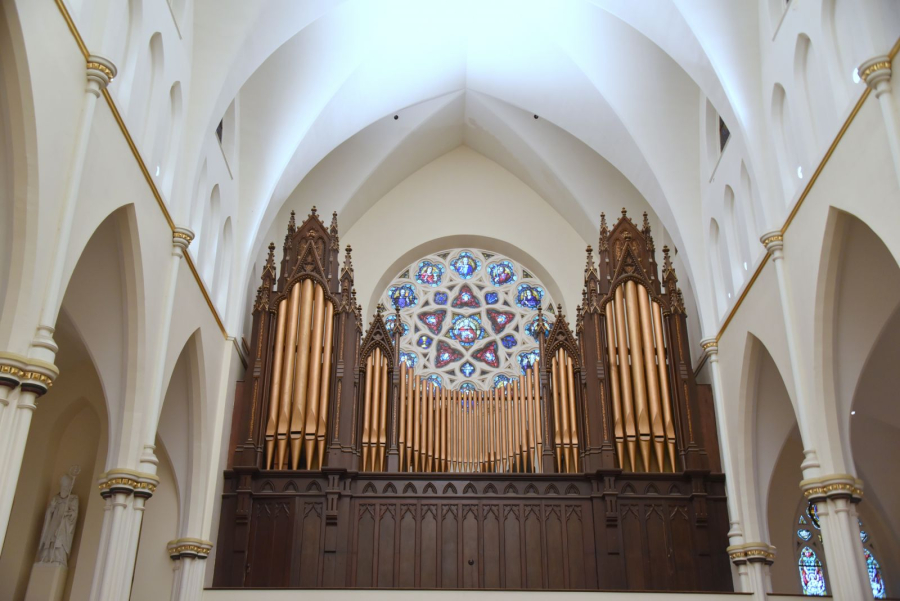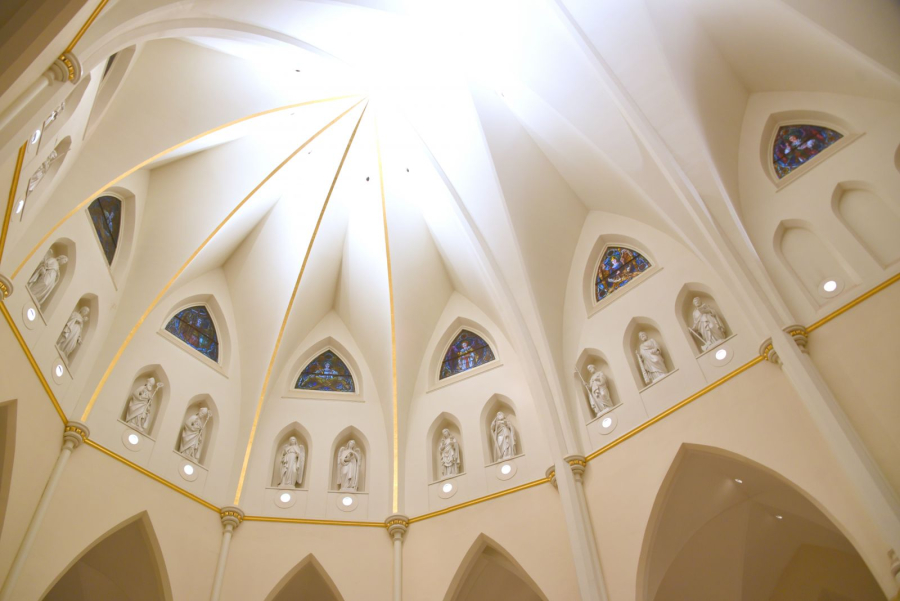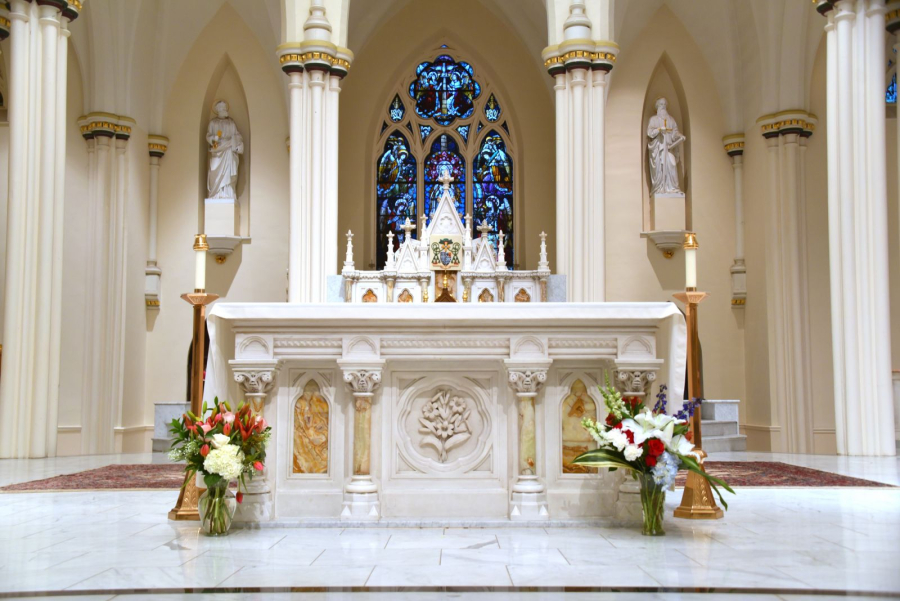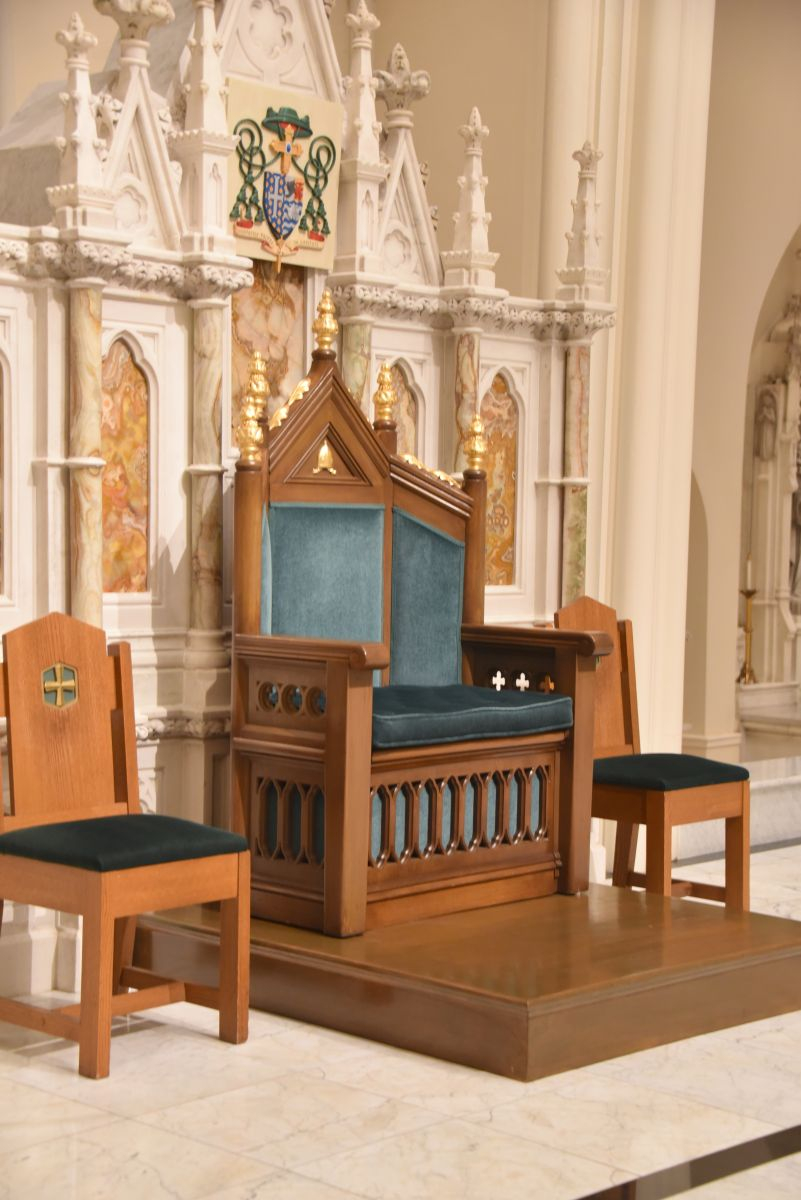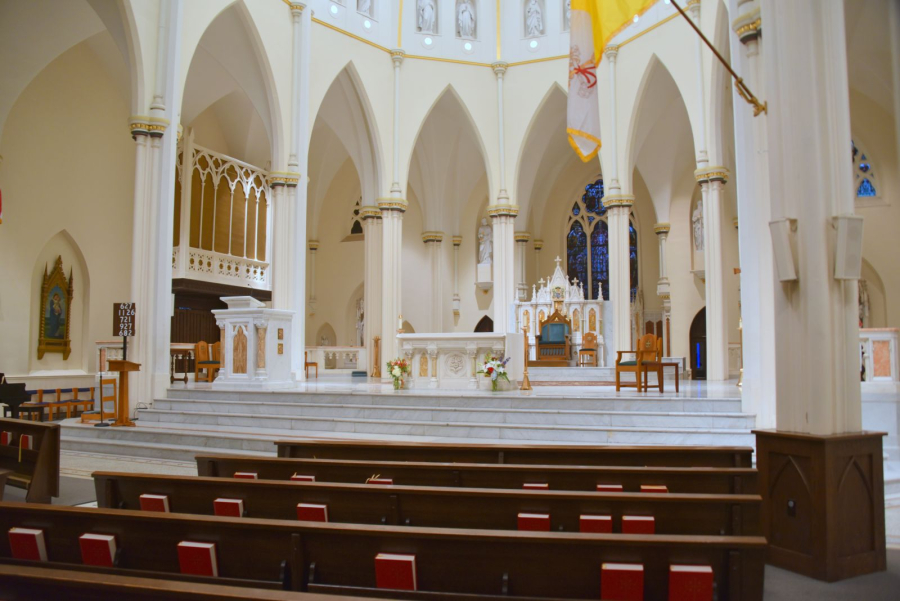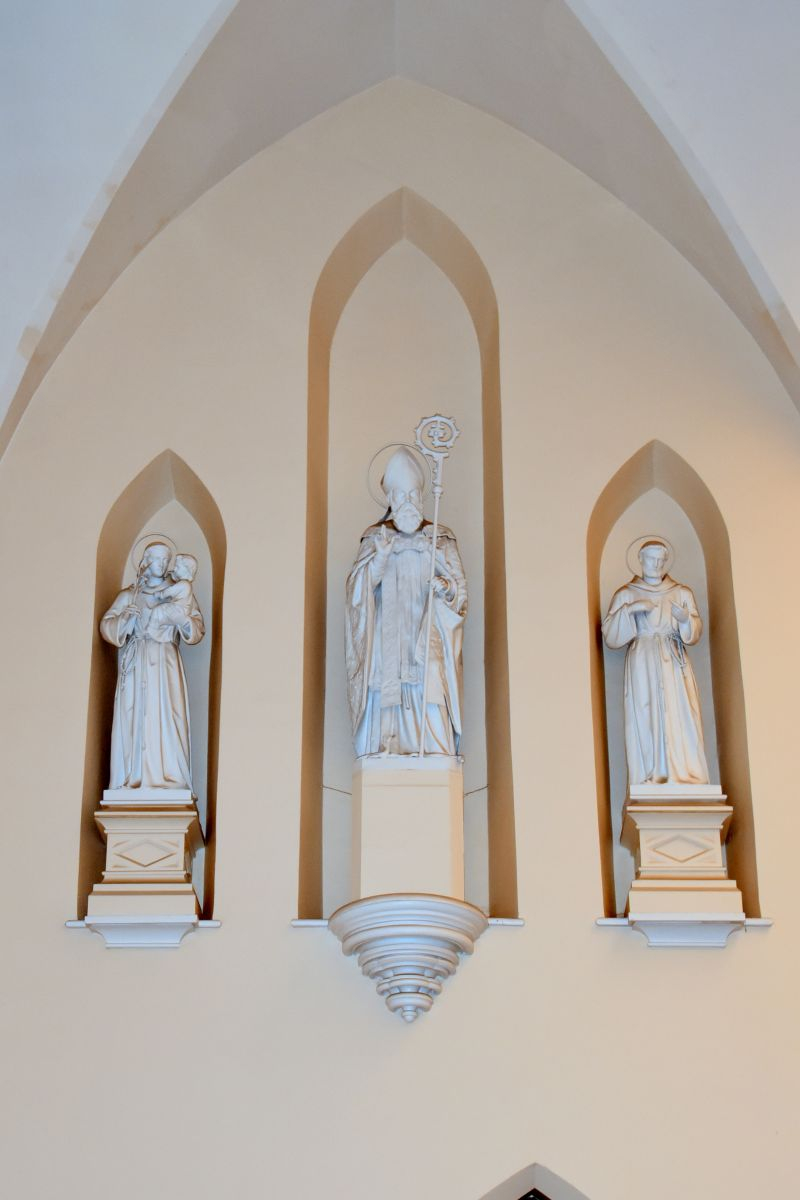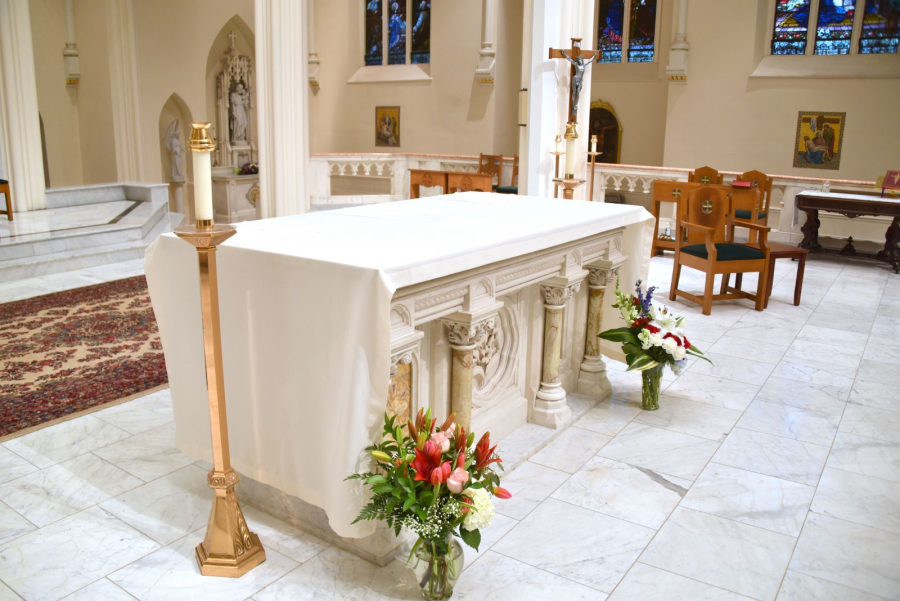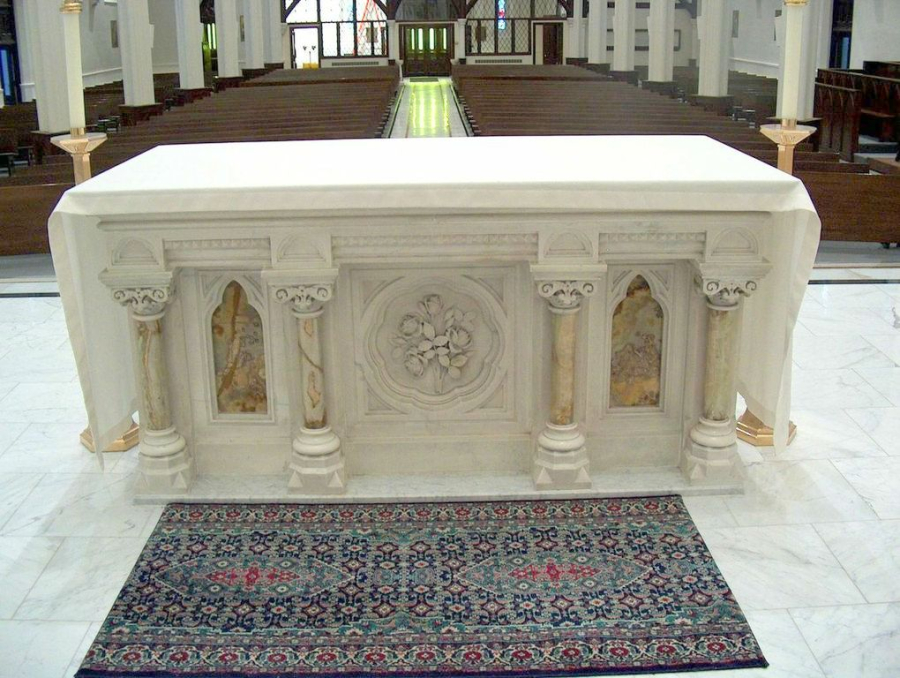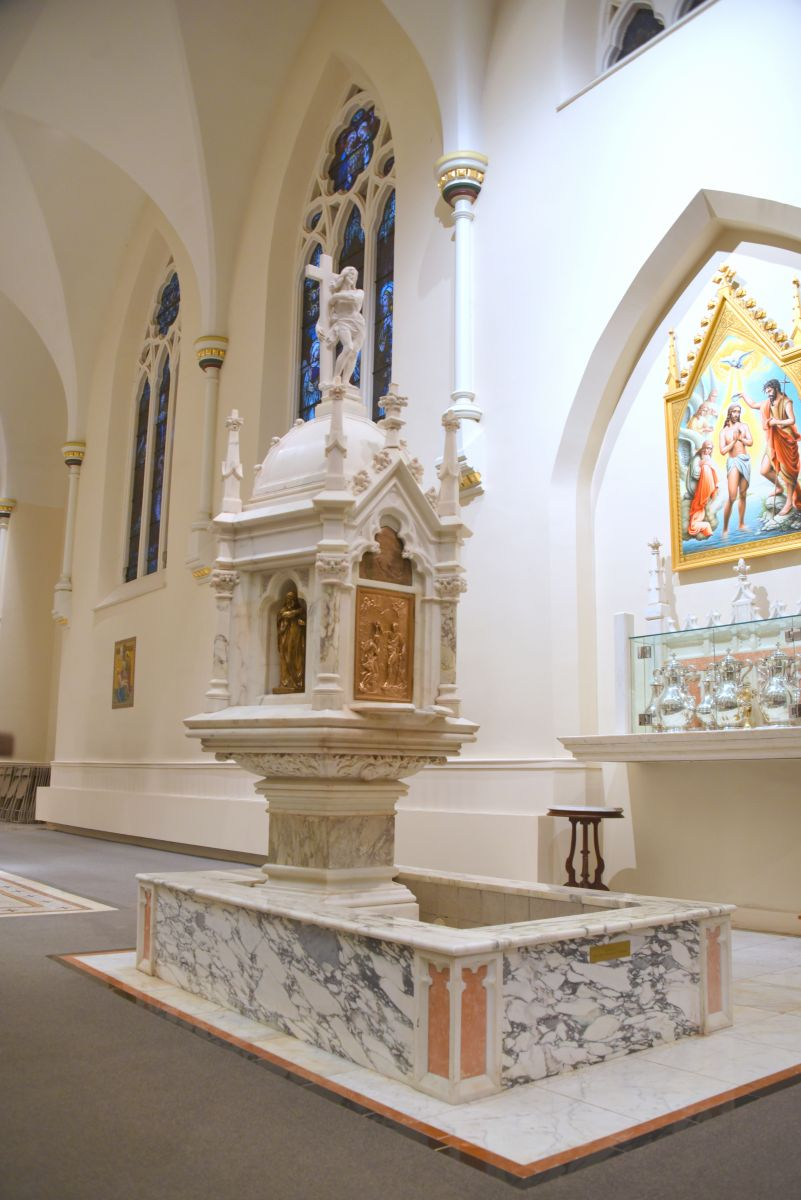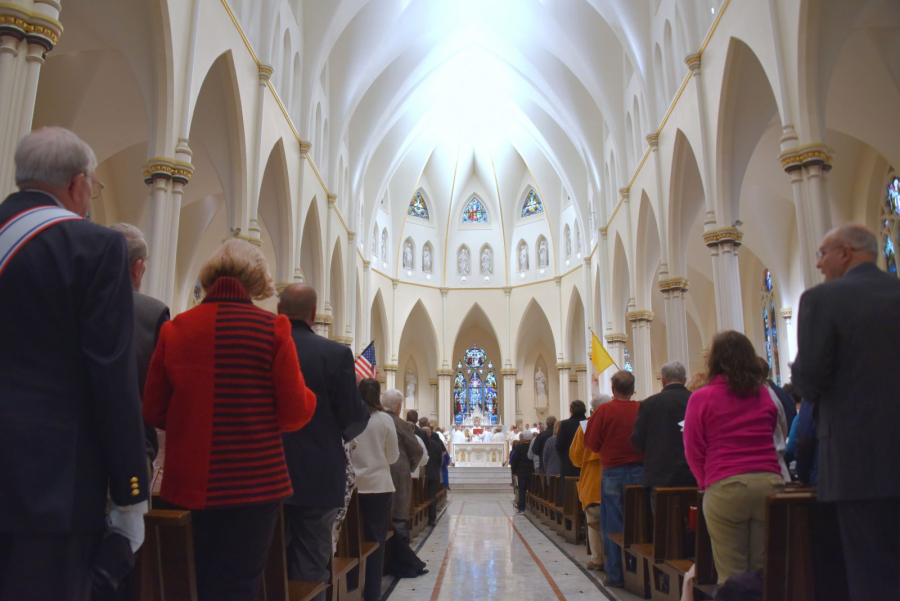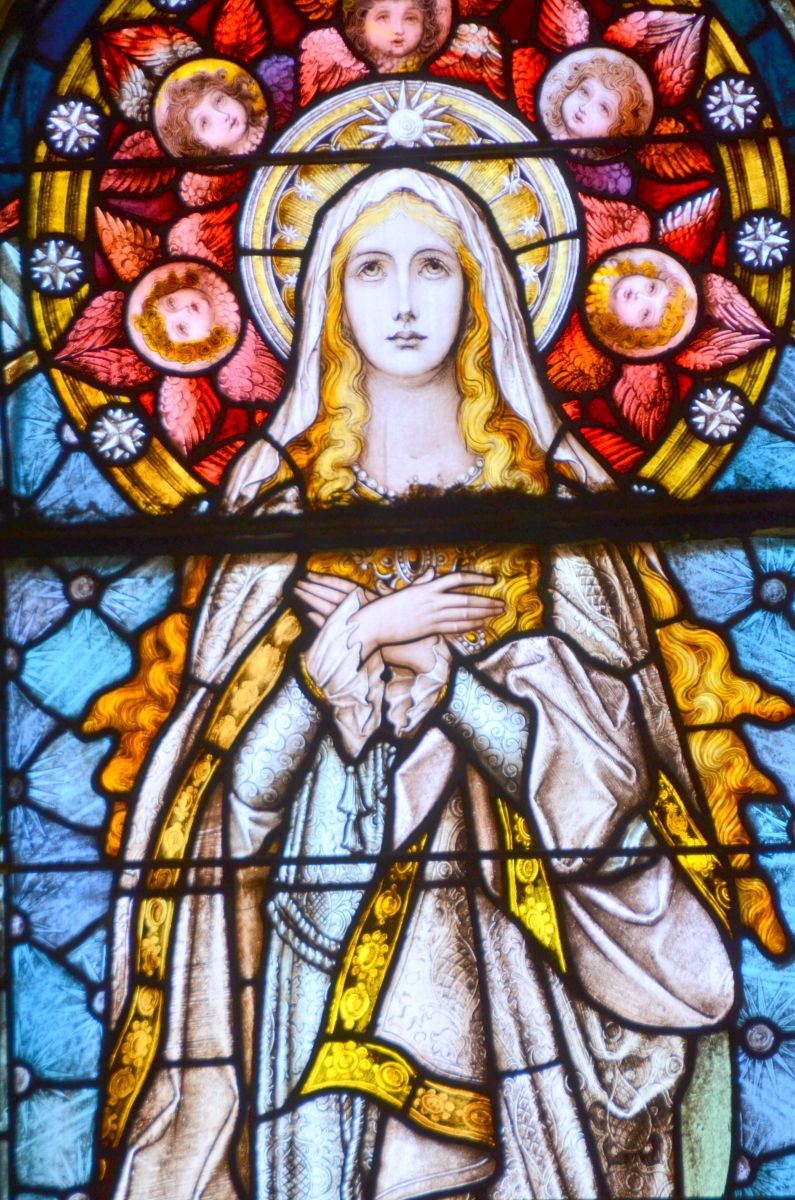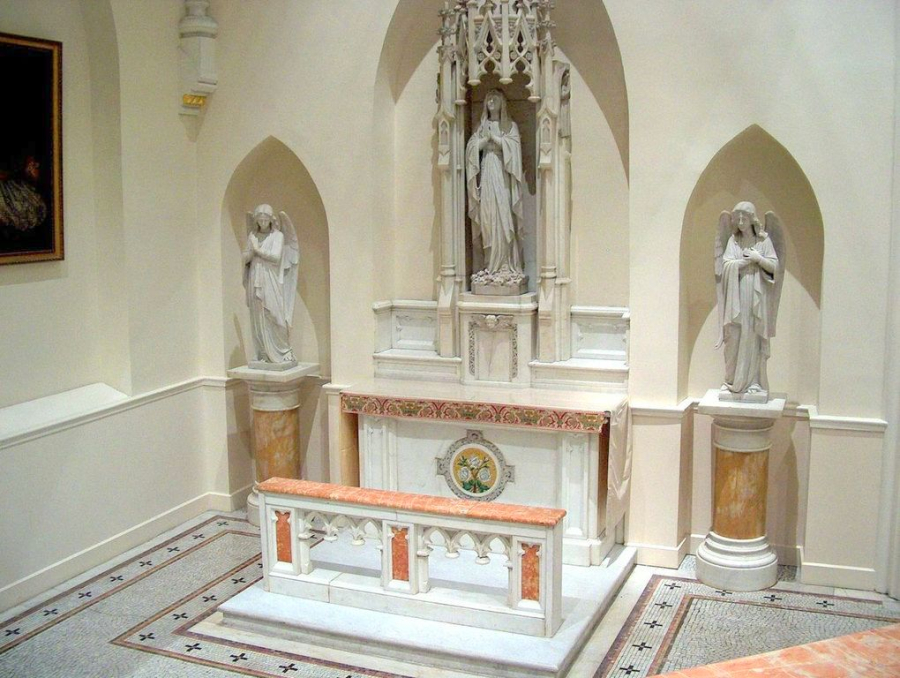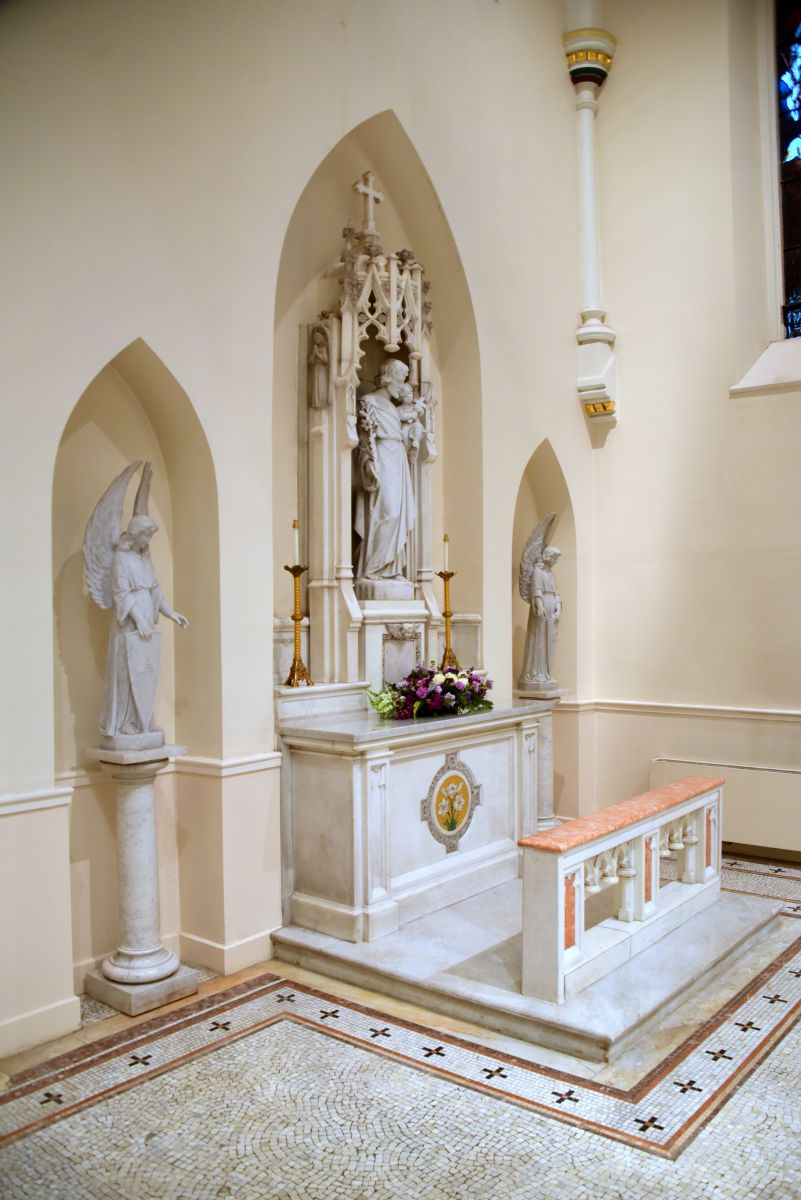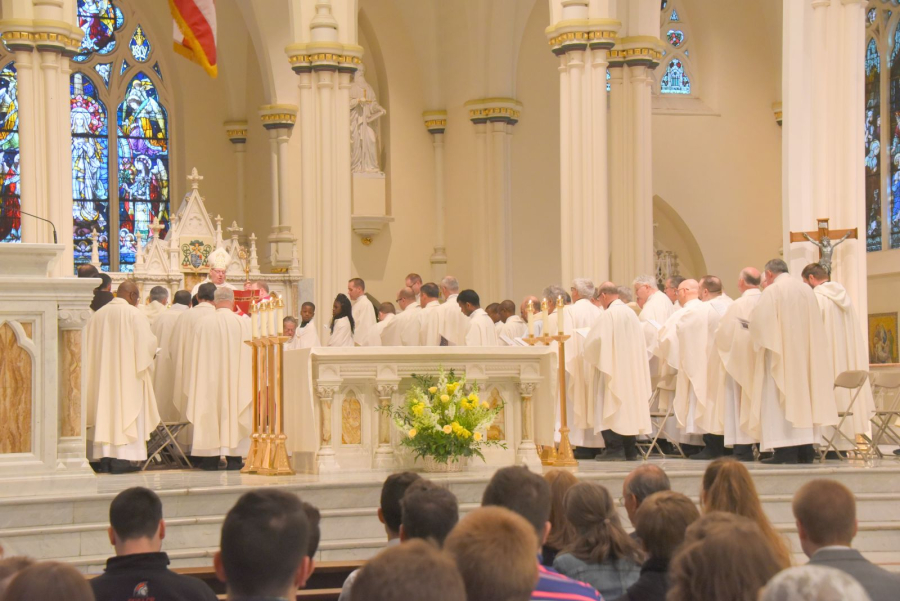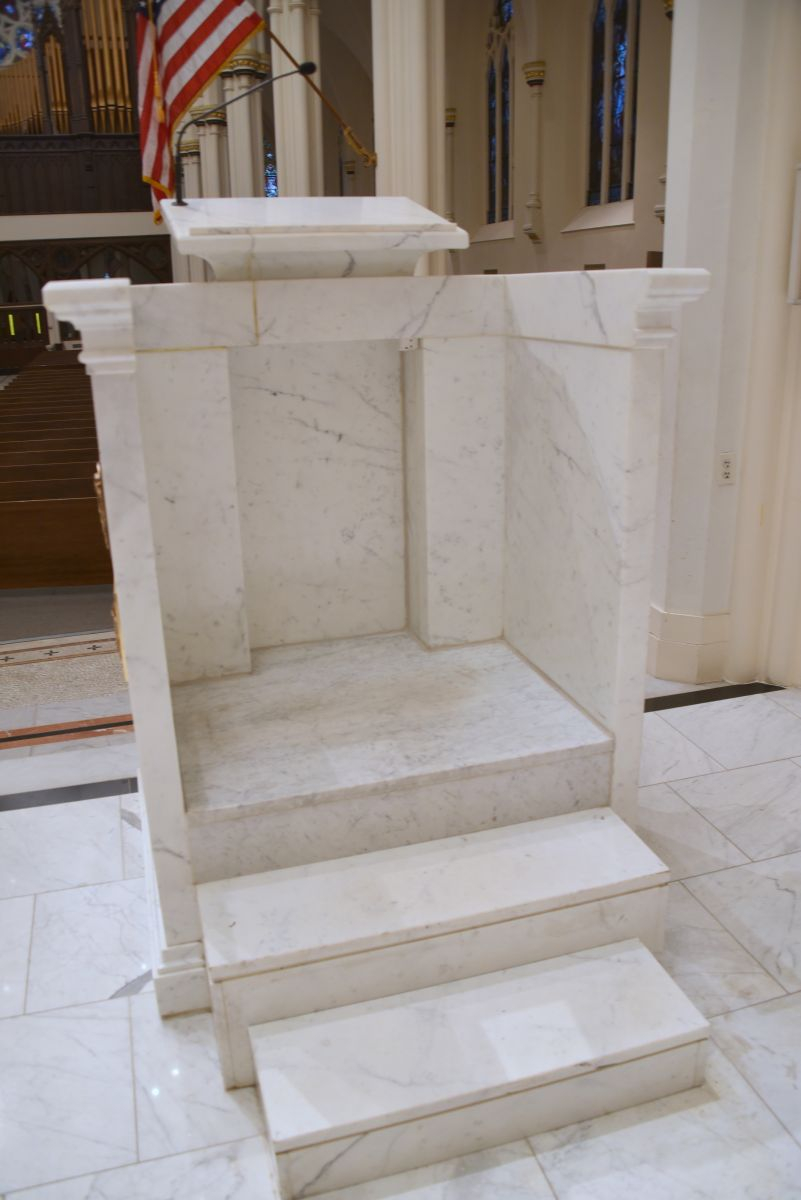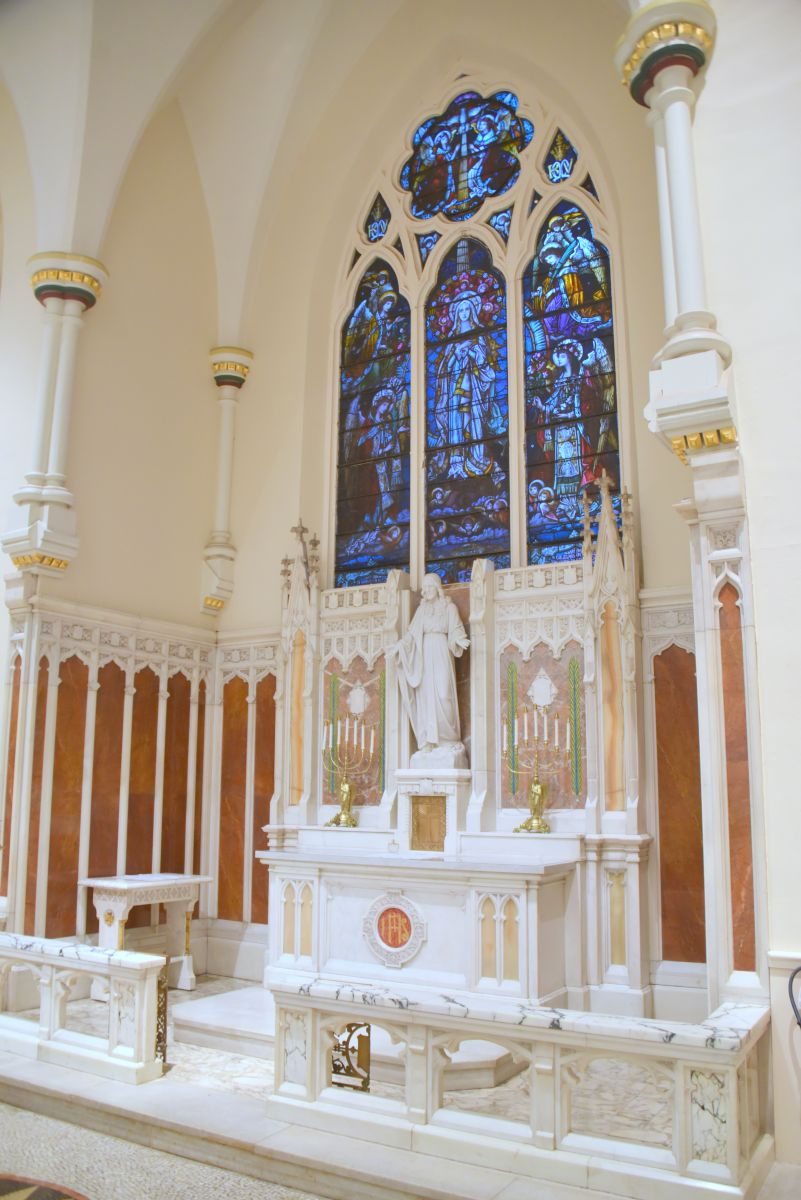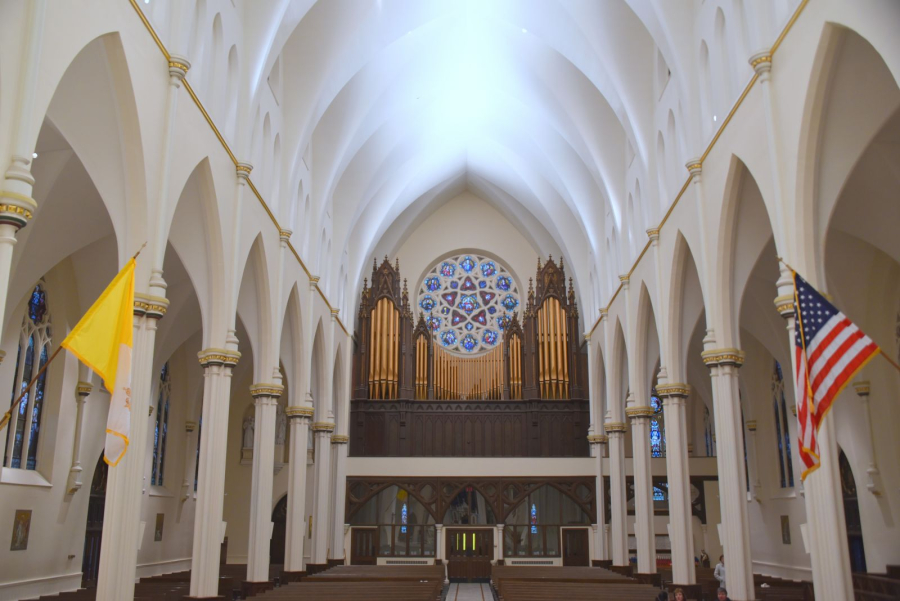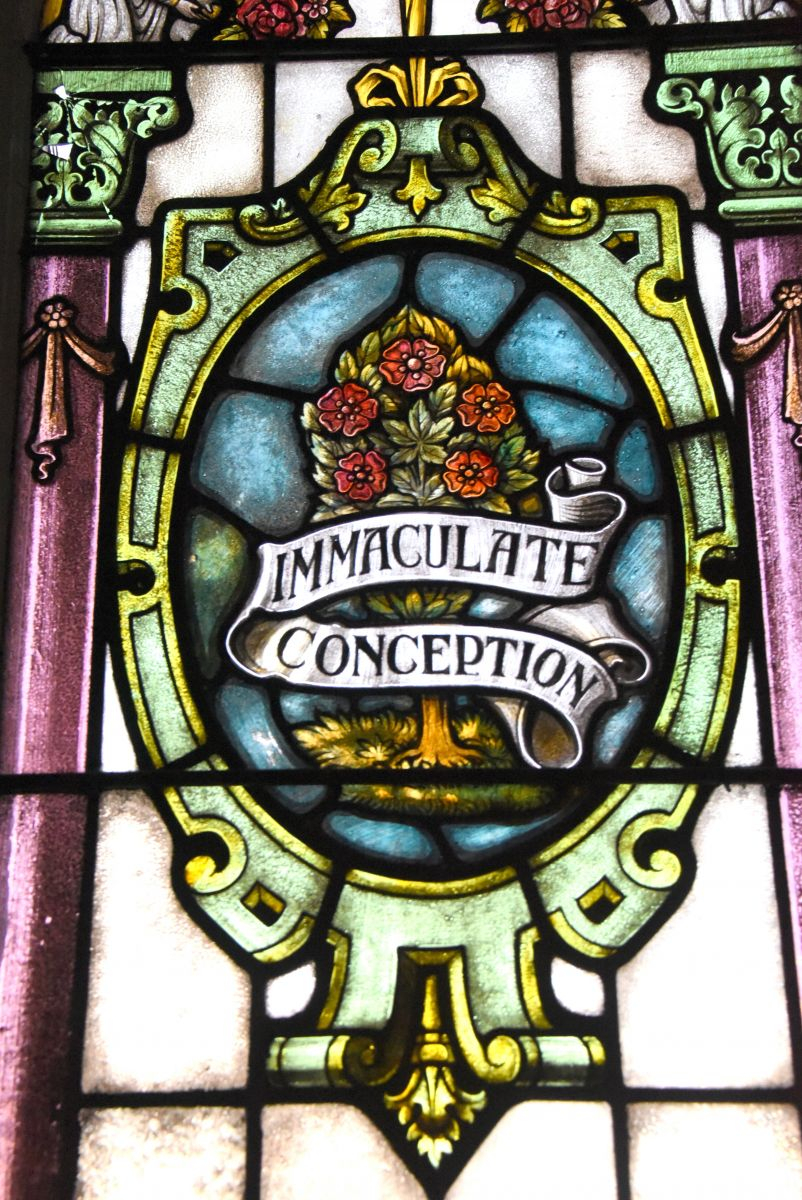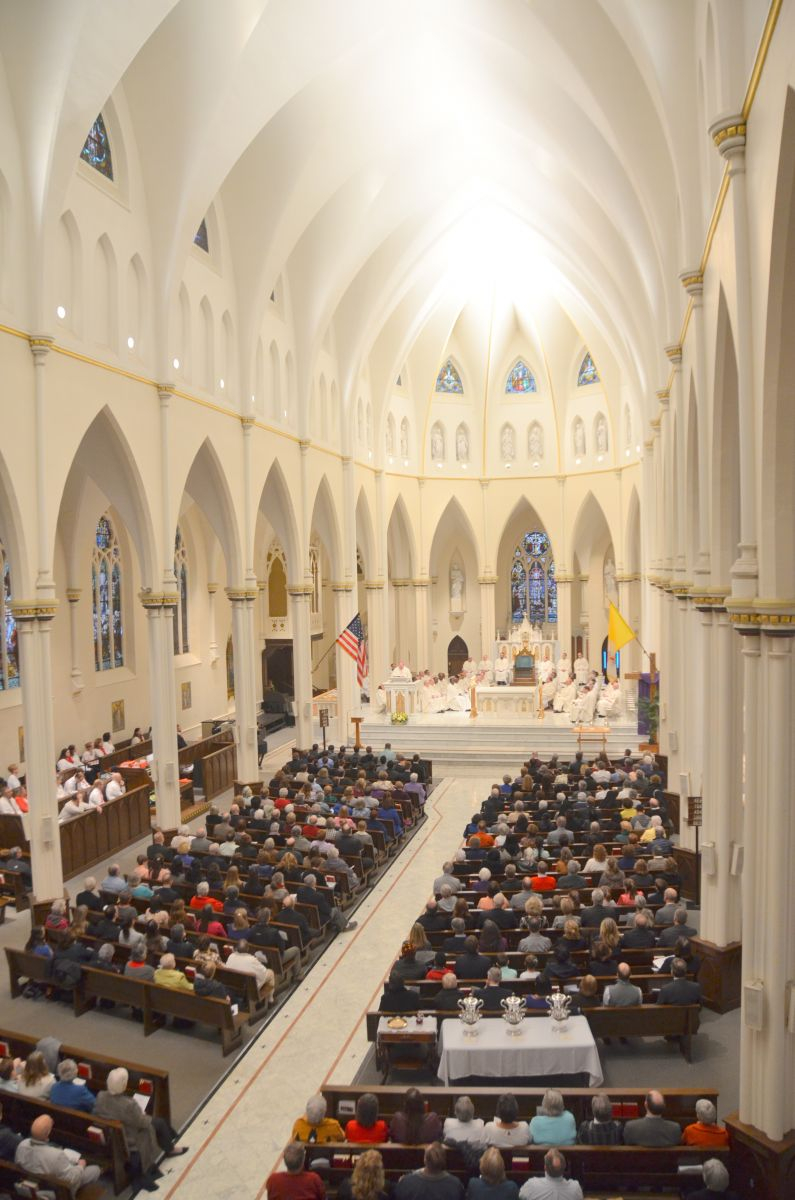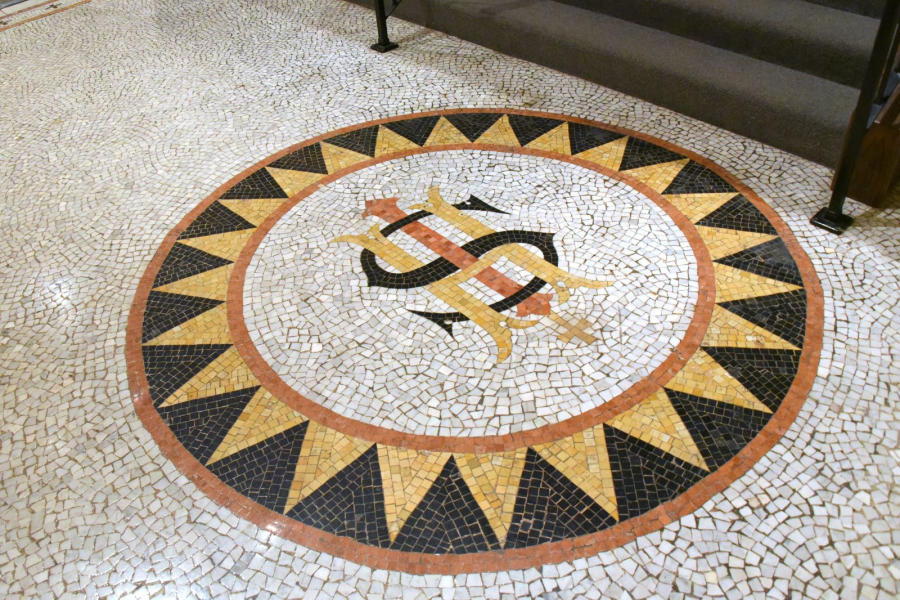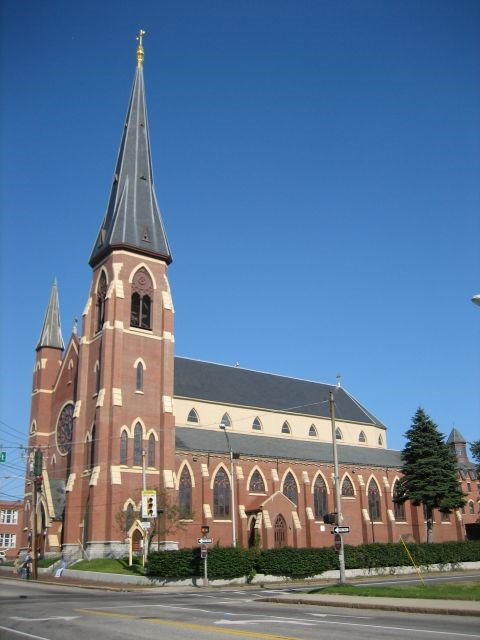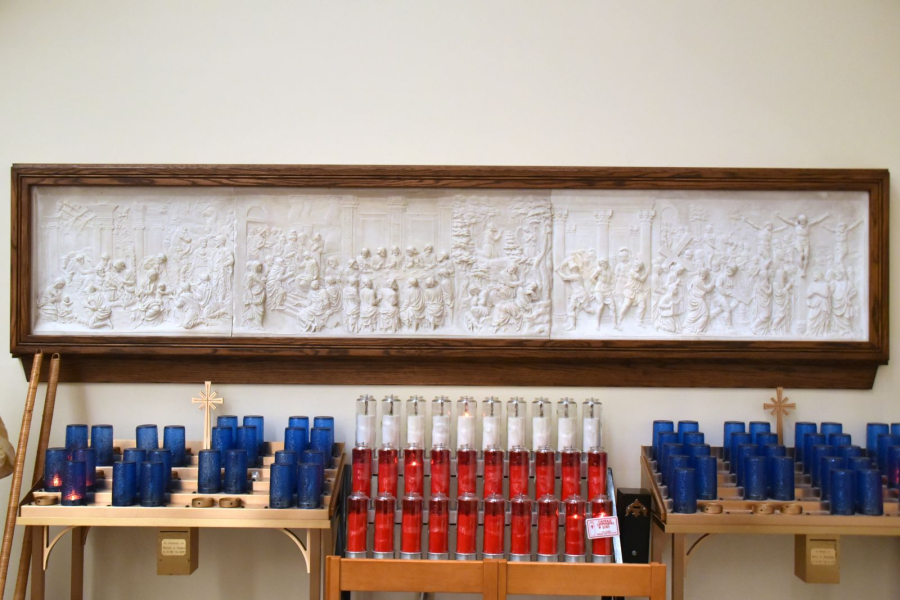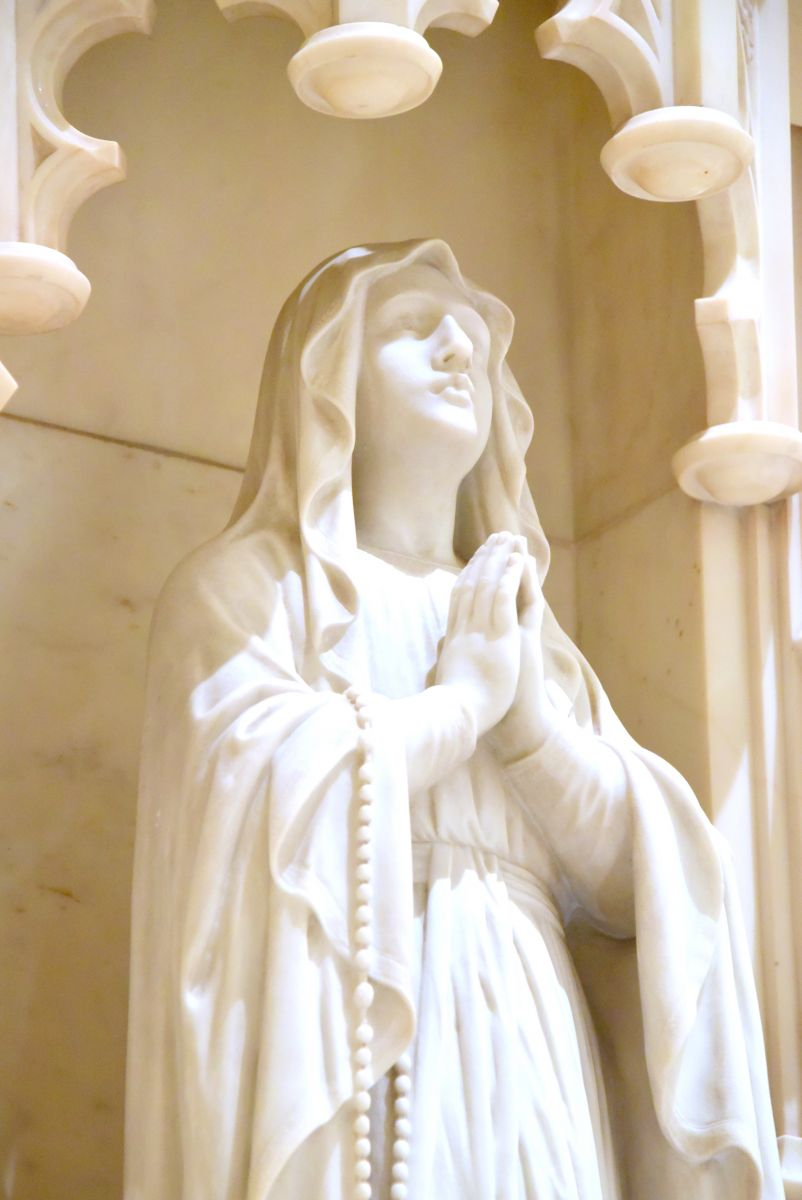Cathedral of the Immaculate Conception
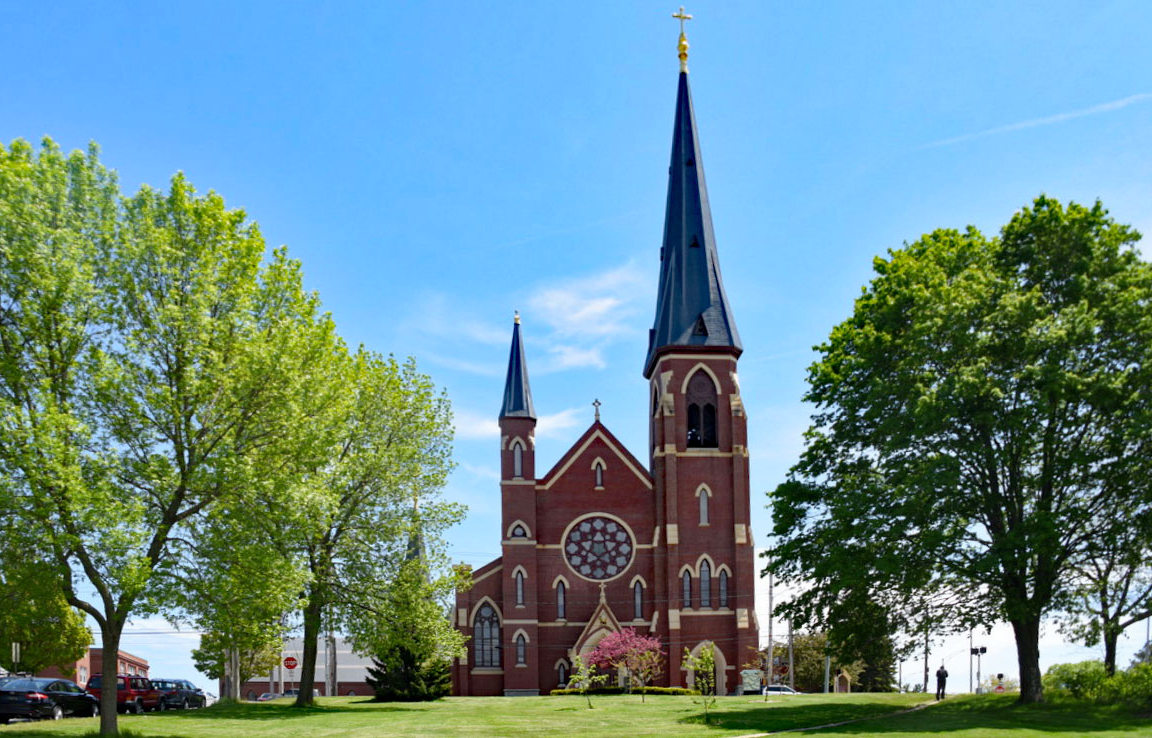
Though Catholicism in Maine dates to the early 17th century, the Diocese of Portland was officially established by Pope Pius IX in July of 1853. Originally, the territorial limits of the diocese were the present states of Maine and New Hampshire (New Hampshire was established as a separate diocese in 1884).
In 1855, the new Diocese of Portland was blessed with its first bishop, Bishop David W. Bacon. His motto of “Courage and Hope” served him well due to the difficulties in purchasing property for a cathedral, eventually acquiring land for a cathedral site on Cumberland Street between Franklin and Locust. The Hiram Covell estate on Congress Street would eventually be obtained for use as a rectory.
Bishop Bacon’s enthusiasm in building a cathedral in Portland is easily understood when considering the cathedral’s place in a diocese. The cathedral church is the site of the bishop’s “cathedra” or chair, a sign of his teaching office and pastoral responsibility. The cathedral itself is a sign of unity among believers that is meant to be the heart of a diocese, a spiritual temple regarded as the express image of Christ’s visible Church praying, singing, and worshiping on earth.
In May of 1856, the cornerstone for the cathedral chapel was dedicated and the chapel itself was finished in December. Work on the main cathedral was intermittent for a few years, then ceased entirely during the Civil War as Maine suffered a tremendous labor shortage in the years during and immediately following the war.
In May of 1866, Bishop Bacon’s eleventh anniversary in Portland, construction of the cathedral began in earnest under the direction of Patrick Keely, the most prominent architect of Catholic churches in the U.S. in the mid to late 19th century. The walls of the new cathedral were nearly completed when the Great Fire of Portland struck on July 4, 1866. By the next day, the cathedral chapel, a parish school, a convent, the newly rising walls of the main cathedral, and the bishop’s residence lay in ashes.
“Nothing of any value was saved,” Bishop Bacon wrote in his diary.
He would go on a fundraising tour through the Northeast and into Canada to raise the necessary money to rebuild. With perseverance and a remarkable influx of funds, a reconstructed chapel was completed by Christmas and construction on the new cathedral commenced in 1868. The cathedral was opened and dedicated on September 8, 1869. On the night of the dedication, a storm knocked down the steeple, but was rebuilt soon after and has remained in place ever since.
The red brick cathedral is an architectural marvel in the Gothic Revival style, a movement which looked to the European Middle Ages and its architecture for inspiration. The cathedral is the prominent feature visible in the city skyline with its asymmetrical bell towers and elongated spires. Its three steeples overlook Portland Harbor and Casco Bay. The vaulted ceiling, punctuated by an arcade seven arches, rises 70 feet above the 150-foot main aisle, with seven pillars on each side of the nave.
Stained-glass Windows
A series of stained-glass windows were installed in early 20th century. They come from the renowned Franz Mayer Glass studios of Munich, Germany, and depict the life of Christ as well as the Blessed Mother. Scenes include the Assumption of the Blessed Virgin, the Nativity of the Lord, the Miracle at Cana, the Death of St. Joseph, and the Crucifixion, among others. The third level, the clerestory, welcomes light through actual windows not just recessed window frames. The striking Immaculate Conception window behind the sanctuary was a gift from Bishop William O’Connell, the third Bishop of Portland. Statues of St. Peter, St. Paul, and the other apostles along with angelic hosts adorn the interior.
Stations of the Cross
The fine mosaic Stations of the Cross were installed in 1930 and each is handcrafted out of approximately 6,000 quarter-inch pieces of Venetian glass.
“The new Stations are accredited with being among the finest here or abroad,” the Portland Press Herald published on May 18, 1930.
Sanctuary
The sanctuary of the Cathedral of the Immaculate Conception stands out among Keely buildings in not having any walls. Rather, it is incorporated in the arcade of columns encircling the building. Behind the sanctuary exists three additional altars: the Sacred Heart Altar, home of the tabernacle, and two side altars that include angels that were once part of the cathedral’s high altar.
Baptismal Font
An elaborate baptismal font was inspired by one in Pietrasanta, Italy. Atop the font is a statue of the Risen Christ, and the baptism of Jesus by John the Baptist is depicted on the font’s bronze door, a replica of Renaissance sculptor Lorenzo Ghiberti’s door at the Baptistery in Florence, Italy.
Organ
The organ at the cathedral contains 3,336 pipes and dates to 1869. It was built by the prestigious Henry Erben Company in New York and was one of the largest in the country at the time.
Vatican II Renovations
Following the close of the Second Vatican Council in 1965, many churches across the country were restored and renovated to bring them into closer conformity to the dynamics of the revised liturgies. At the cathedral, an altar facing the assembly was erected, and the bishop’s seat was placed at the head of the sanctuary. In addition, room was created for priests to be seated next to the bishop during Mass. The organ console and choir stalls were relocated on the floor of the cathedral. Whereas in the past, the people had listened to an unseen choir in the loft above and behind them, now the choir and parishioners could raise their voices in unison. Three marble panels from the original high altar which represented significant events in the life of Christ were moved to the back wall. All changes emphasized the simplicity which had characterized the early Church and made a more active participation of the faithful possible.
Millennium Restoration
The Millennium Restoration (1999-2000) saw portions of the altar, pulpit, and reredos from St. Dominic Church repurposed for the Cathedral sanctuary. The original mosaic tile floors were now visible again and the baptismal font, once located at the entrance of the chapel, was returned to the main cathedral with a discrete immersion pool added. A new carillon was installed in the bell tower, and a new vestibule displays artifacts of Bishop James A. Healy, the first black bishop ordained in the United States. In recent years, various renovation projects have been completed, including steeple and bell tower work.
The Cathedral of the Immaculate Conception is on the National Register of Historic Places (1985), the Greater Portland Landmarks list (1984), and has been designated a National Catholic Historical Site by the International Order of Alhambra (2003).
What once overlooked fields and scattered dwellings now is an enduring and impressive part of the Portland skyline. But beyond its style and grace, the cathedral fulfills its purpose as a witness to God and a reassuring symbol of community and faith.
“This is truly a magnificent place, a noble and uplifting building which turns our hearts and minds to God,” wrote Bishop Joseph J. Gerry, O.S.B., the tenth Bishop of Portland, on the occasion of the cathedral’s 125th anniversary. “We are called to make sure that this church remains the beacon of faith and charity which it has been in this city and state for many years.”
To schedule a group or private tour, please contact the parish office at (207) 773-7746.






